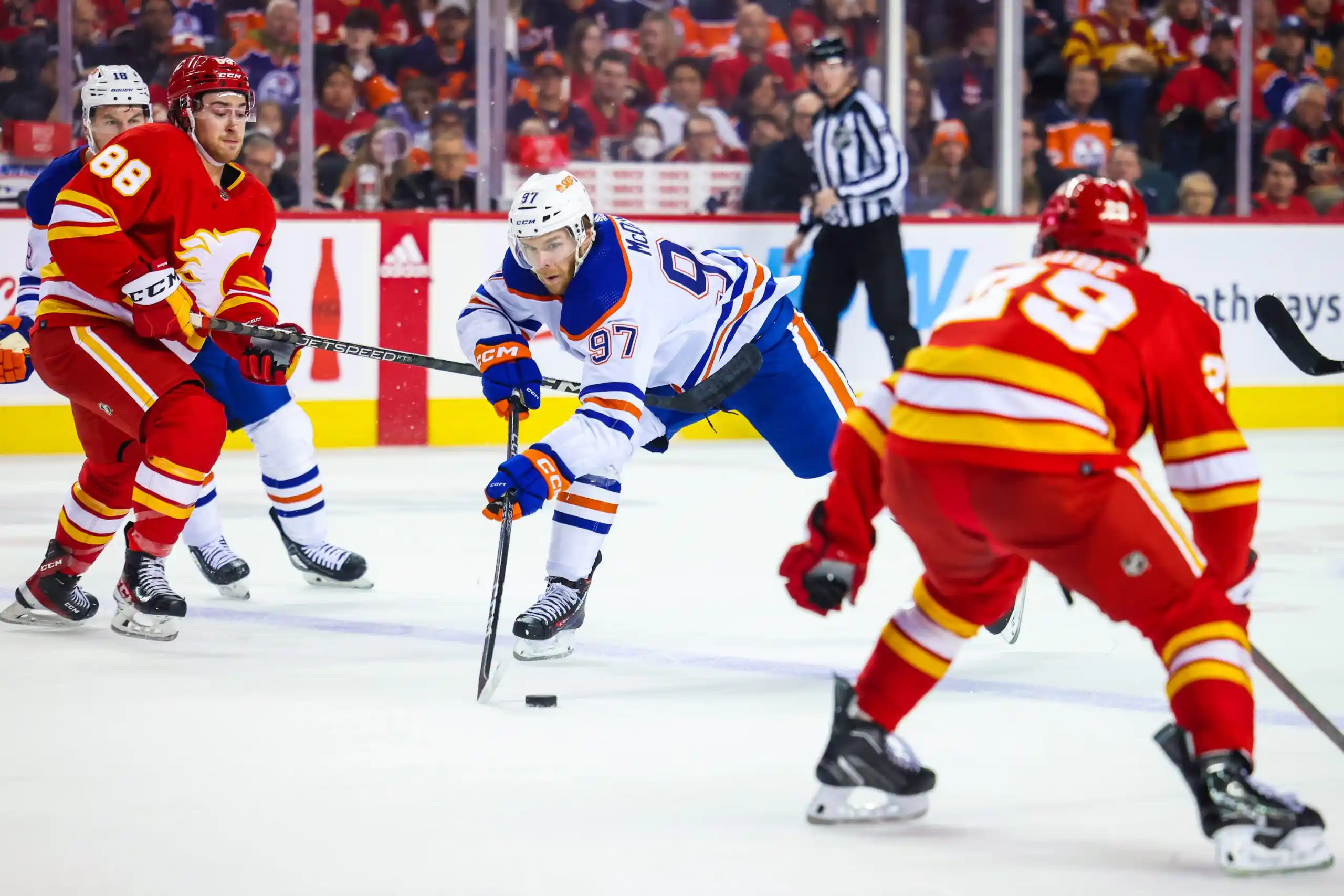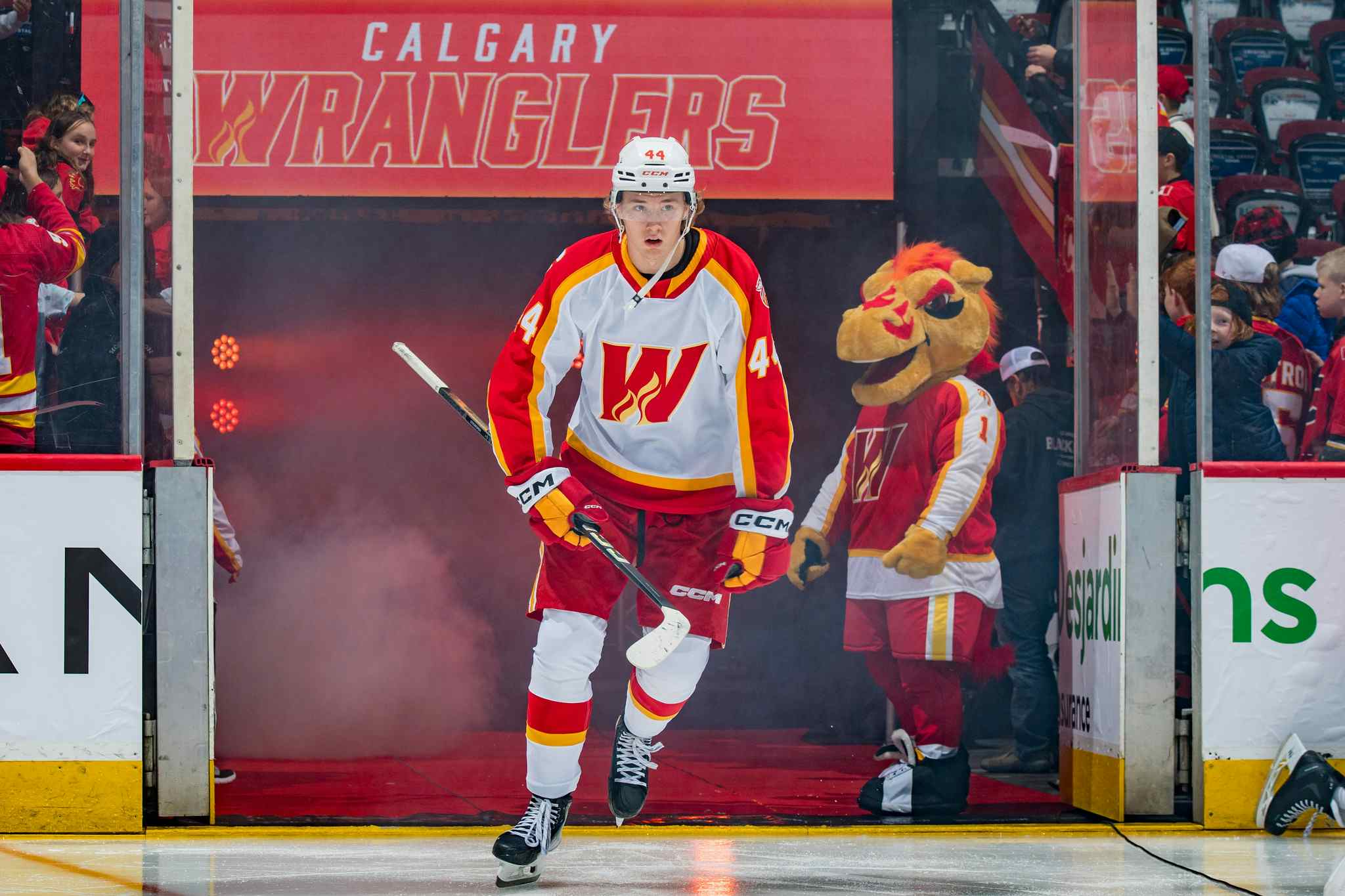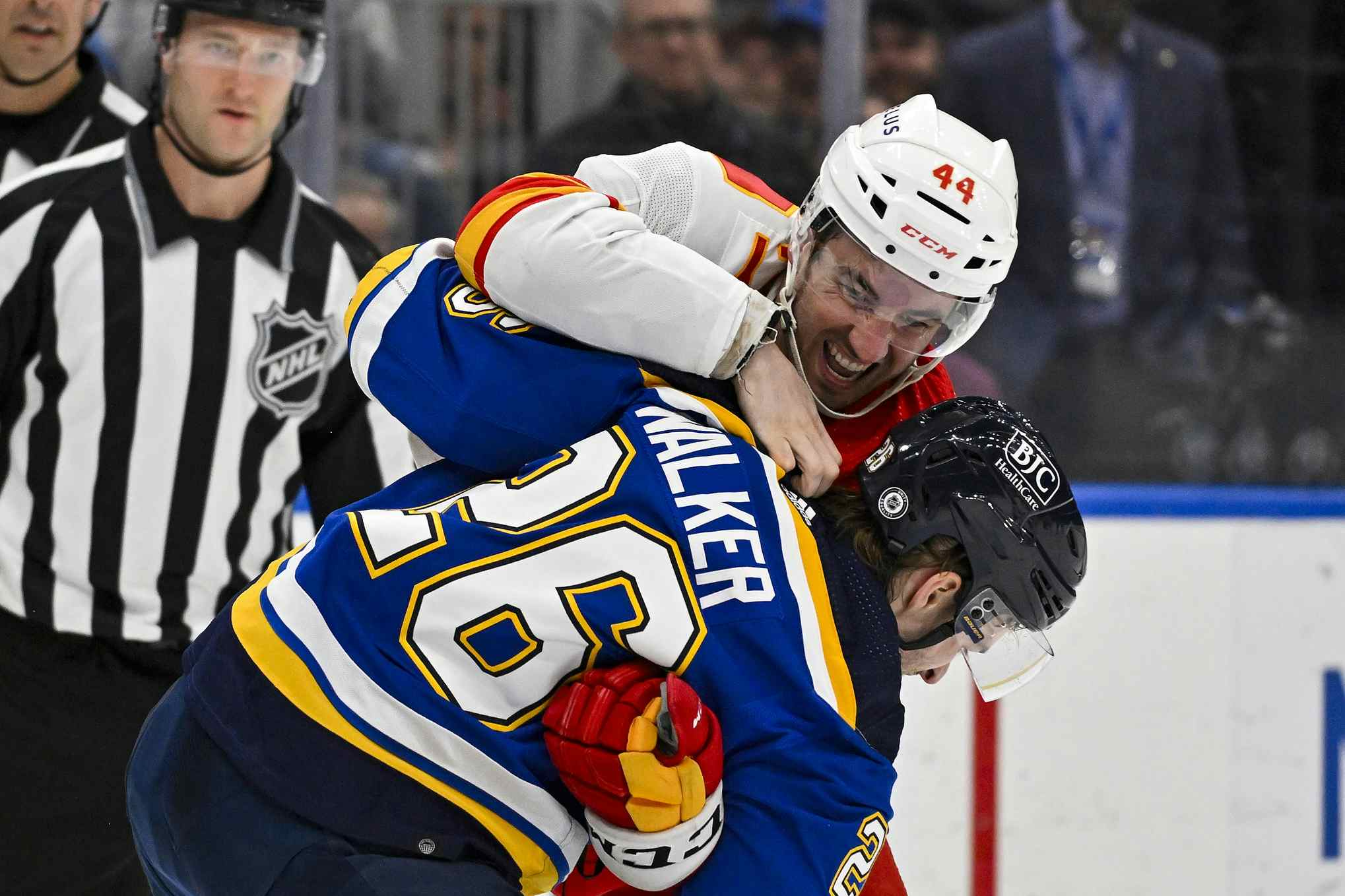Have the Trades Helped Jarome?
By Kent Wilson
14 years agoYesterday I talked about the apparent team-wide improvement that has occured since the Phaneuf and Jokinen trades. Today I’ll focus on the apparent effect they’ve had on Jarome Iginla. One of the unspoken reasons for executing such a major exchange was the struggles of the Flames captain, who is (was?) having one of his worst seasons in the last decade in terms of results and underlying stats.
Prior to the deals, Iginla wasn’t really driving possession in a manner that was consistent with his past or his paycheck. In fact, he and Jokinen spent the first half of the season chasing the bad guys around their own end for most of the night. Iggy was on pace for his lowest point total since 2005-06 and his lowest goal total since 1999-2000. It wasn’t the result of bad bounces either, since his personal shot rate (3/game) was way off his typical pace (3.65/game). That doesn’t look like huge difference, but over an 82 game schedule that’s about 50 shots.
Part of the problem was a lack of power play time, since the Flames are one of the worst teams in the league at drawing penalties. That said, Iginla wasn’t getting the job done at even strength either where his shot rate lagged behind others on the team, including the erstwhile "# 1 center" Olli Jokinen. The causes of his struggles have been hotly debated by Flames fans this year, with some pointing to lackluster line mates and tough opposition as the cause, while others claim it’s a sign of decline. Personally, I fall somewhere in the middle of the debate. By observation, Iginla looks less effective to me relative to past years: he spends a lot of time on the periphery of the play and tends to try to make plays while stationary. He doesn’t look as strong on the puck as he used to either. However, the rival viewpoint is also valid. Brent Sutter began the year pairing Iginla with Jokinen and then sending them out against other team’s best players. The pair spent a lot of time taking own zone draws against superstars, which is, to put it mildly, not Jokinen’s bag baby. They got murdered most nights. Through the first 40 games, Iginla and the pumpkinheaded fin were two of the worst Flames in terms of corsi rates and scoring chance differential. That’s hardly ideal when talking about $12 million worth of forwards.
Over the first 56 games of the season we can look at Iginla’s ES possession stats thanks to this handy app. It takes a minute to compile and the results look confusing, but for the purposes of this analysis all you need to consider is the CORSI% column. For those unfamiliar, corsi is a proxy for zone time (shots directed at the net both for and against while the player is on the ice at even strength). This program displays the corsi ratio, so if player X is at .600, then that means that 60% of all the shots that were taken while he was on the ice at 5on5 were directed at the opposing goalie. If he’s at 40%, that means 60% of the shots were directed at his goalie. And so on.
Iginla’s ratio from October 1 to February 1 was 51.9%, which is just okay. He was under water for most of the year, but there was some recovery after he and Jokinen were split up. Since that time, Iginla’s corsi ratio in the six most recent games has increased to 57.5%, an improvement of over 5%. Again, that sounds small, but it’s actually fairly substantial. Assuming, for example, that there are 75 total shots directed at either net over the course of a game, that’s 450 shots over 6 contests. Fifty-two percent represents 234 shots, while 57.5 is about 259 (+25). If we prorate that over an 82 game schedule again, we’re talking about a difference of of some 340 shots. That’s a lot more time spent at the good end of the rink.
If you glance at the bottom of both links, you’ll notice the team overall has improve from 52.2% to 56.3% since the deals went down. Again, we’re talkiing about a small sample here so what we might be noticing is a temporary aberration rather than a real improvement. Assuming, for the moment, that the step forward is genuine, the fact that Calgary is spending more time in the offensive zone at ES is another good sign. The improvement, for both Jarome and the club as a whole, has come through the addition of Stajan and Hagman to Iginla’s line, as well as the combination of Langkow and HIggins on the second unit. If you glance at the latter pairs corsi results so far (#21 and #22 in the chart) you’ll notice that they are moving the puck in the right direction (60.9% for Higgins and 56.7% for Langkow), despite the fact that Sutter has deployed them in a "shut-down" role for much of their time together. This does two things for Iginla: frees him from having to play against the other team’s best players all the time and sets him up for more offensive zone draws since the puck ends up at the good end of the rink more often when he’s not on the ice. This is why we see Iginla’s personal shot rate up around 4.8/game since the changes.
This analysis doesn’t answer questions surrounding Iginla’s theoretical decline – this is a discussion of the apparent effect the improvement in circumstances have had on him thus far. It remains to be seen if these gains are enduring and to what degree they situation dependent. Afterall, $7 million players should be driving results rather than relying on favorable matchups, but that’s a debate for another time. In context of the Flames fight for a playoff spot, I’m pleased with the direction things are headed.
Recent articles from Kent Wilson






